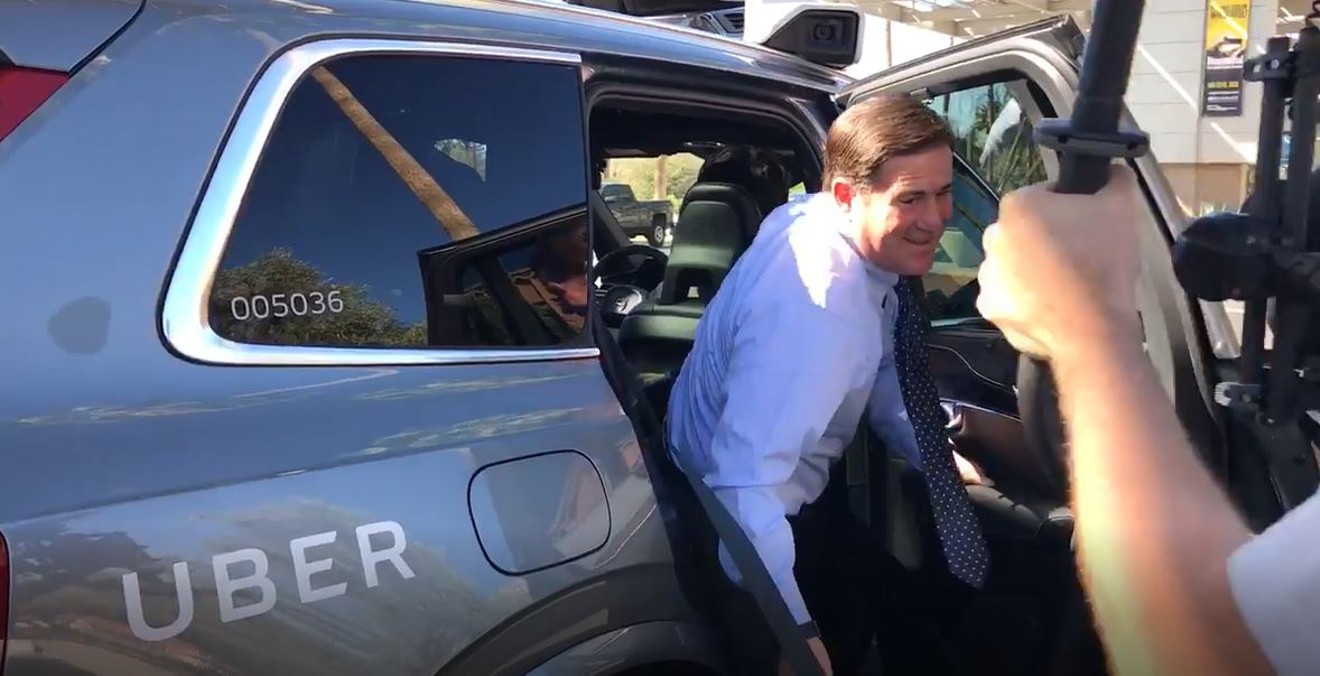The autonomous Uber car that hit and killed a pedestrian in Tempe on March 18 had detected the woman, but ignored the information from its sensors, according to a bombshell article published Monday.
In a statement, Uber didn't refute any of the findings in TheInformation.com article by Amir Efrati.
Efrati's article quotes two unnamed people who may be current or former employees of Uber. The reporting adds a significant twist to the case for autonomous technology followers, and gives the public its first update on the probe into what happened.
Uber, Tempe police, the Maricopa County Sheriff's Office, the National Transportation Safety Board, and the National Highway Traffic Safety Administration all continue to work on a probe into the fatal crash.
Elaine Herzberg, 49, was crossing mid-block on Mill Avenue just north of the bridge over the Town Lake when one of Uber's Volvo XC-90 cars in autonomous mode slammed into her at about 40 mph. An interior camera showed that the car's backup driver, Rafaela Vasquez, wasn't looking at the road in the seconds before the crash.
Governor Doug Ducey encouraged Uber's autonomous-vehicle testing program to come to Arizona with the promise of lax regulations. Since the crash, Ducey banned Uber's autonomous vehicles from the road after the crash, but has allowed other autonomous vehicle companies to continue testing.
As Phoenix New Times reported last week, two companies — Waymo (Google) and Nuro, which makes autonomous delivery vehicles — have filed paperwork recently with the state to begin testing fully autonomous, no-backup-driver vehicles on Arizona roads.
According to Efrati's sources, Vasquez and the car might have been alerted to the pedestrian's presence — if only the car had been programmed to respond appropriately to obstacles in the road.
"The car’s sensors detected the pedestrian ... but Uber’s software decided it didn’t need to react right away," the article states. "That’s a result of how the software was tuned."
Uber's cars, like other self-driving vehicles, is made to ignore obstacles they detect that pose no threat.
"In this case, Uber executives believe the company’s system was tuned so that it reacted less to such objects. But the tuning went too far, and the car didn’t react fast enough," Efrati's sources said.
Efrati doesn't make clear who the sources are, but they seem to have deep inside knowledge of the company's self-driving unit. The article describes how employees broke into tears after hearing of Herzberg's death.
Uber's internal investigation showed that a "vital piece of the self-driving car was likely working properly: the 'perception' software, which combines data from the car’s cameras, lidar, and radars to recognize and 'label' objects around it. In this case, the software is believed to have seen the objects. The problem was what the broader system chose to do with that information."
Efrati's sources said that Uber had been "racing" to meet a goal to deploy fully autonomous vehicles on Arizona roads that have no backup drivers and would operate in "good weather" only.
As it worked toward the goal, the article states, Uber programmed its vehicles to react less vigorously to obstacles in the road deemed "false positives" so that passengers would have a smoother ride.
New Times asked Uber if any of the information in Efrati's article was unreliable or false. The company's response made no mention of anything inaccurate in the article:
“We’re actively cooperating with the NTSB in their investigation," the company said through a spokesperson. "Out of respect for that process and the trust we’ve built with NTSB, we can’t comment on the specifics of the incident."
Uber's engaged in a "top-to-bottom safety review," the company said, adding that former NTSB Chair Christopher Hart is advising Uber on "overall safety culture."
Tempe police didn't respond immediately to a request for an update on its investigation.
[
{
"name": "Air - MediumRectangle - Inline Content - Mobile Display Size",
"component": "18478561",
"insertPoint": "2",
"requiredCountToDisplay": "2"
},{
"name": "Editor Picks",
"component": "16759093",
"insertPoint": "4",
"requiredCountToDisplay": "1"
},{
"name": "Inline Links",
"component": "17980324",
"insertPoint": "8th",
"startingPoint": 8,
"requiredCountToDisplay": "7",
"maxInsertions": 25
},{
"name": "Air - MediumRectangle - Combo - Inline Content",
"component": "16759092",
"insertPoint": "8th",
"startingPoint": 8,
"requiredCountToDisplay": "7",
"maxInsertions": 25
},{
"name": "Inline Links",
"component": "17980324",
"insertPoint": "8th",
"startingPoint": 12,
"requiredCountToDisplay": "11",
"maxInsertions": 24
},{
"name": "Air - Leaderboard Tower - Combo - Inline Content",
"component": "16759094",
"insertPoint": "8th",
"startingPoint": 12,
"requiredCountToDisplay": "11",
"maxInsertions": 24
}
]












